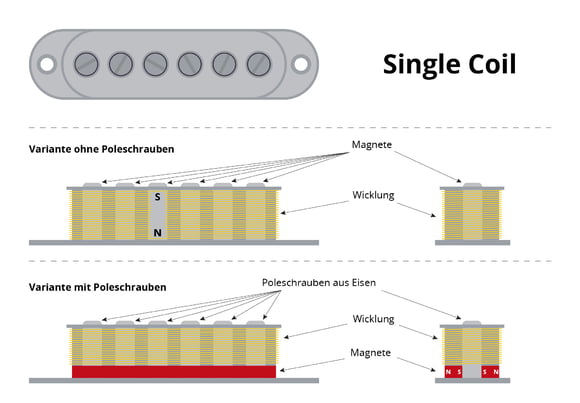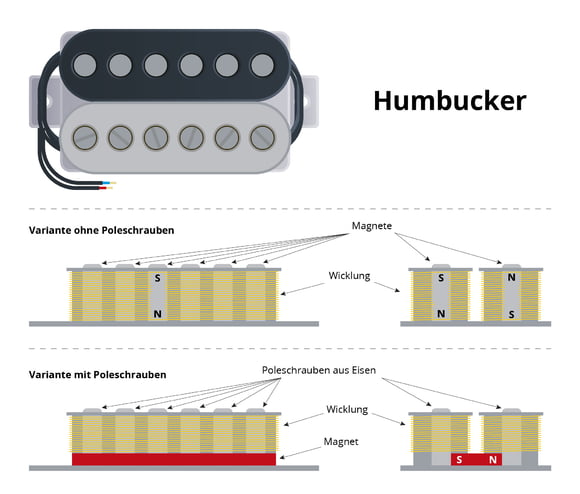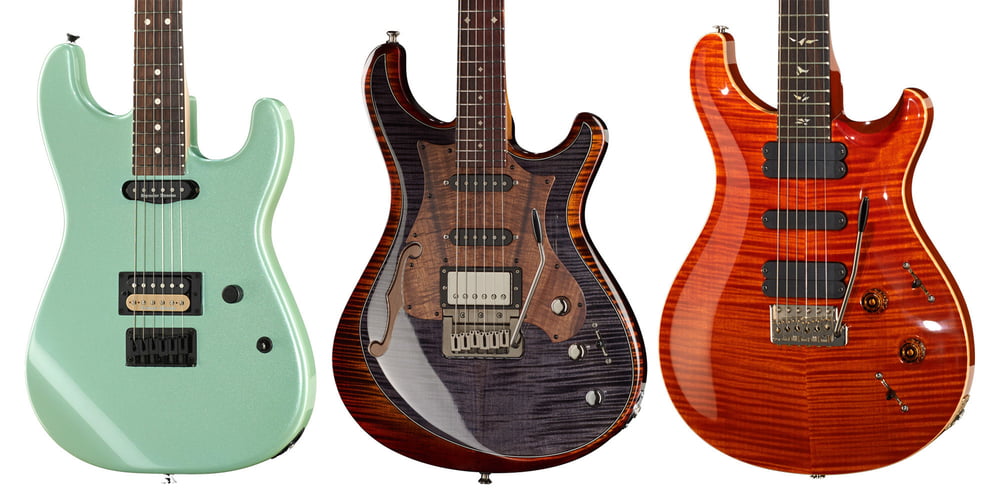3. Pickup Basics
E-guitar pickups can be divided into two major categories:
Humbuckers and Single Coils
In order to correctly describe each types we have divided our guide in two. Before we get soldering though, here are some basics that can be applied to both types:
The differences between them are primarily to do with their construction. If a single coil pickup, as the name implies, consists of a single coil, then a humbucker generally consists of two coils. These conceptual differences are directly responsible for the sound characteristics typical to each style.
A single-coil pickup is quite sensitive to external electromagnetic influences and anyone who has ever played a Strat in front of a computer monitor knows what we're talking about. Not only computers but neon lights in rehearsal rooms, or any kind of transformer, can quickly lead to a hum. Despite the increased noise level, the sound of single coils is unarguably good and any associated noise is gladly accepted as a result. An advantage of the single coil design is that they are very precise, reproducing even the smallest nuances in play, allowing for a much more dynamic sound.
Humbuckers on the other hand produce no hum and usually have a stronger/louder sound. The two coils of these pickups are combined with one other in such a way that interference is eliminated and the power of both coils is used. This leads to their stronger sound and, as a result, the ability to create incredible amp overdrive. The sound produced is also more centered and smooth than that of a single coil.
The best of both worlds - humbucker and single coil combos
For awhile there was a relatively clear separation of the two concepts and their sounds. The Les Pauls as well as their close and distant relatives were associated with fat humbucker sounds. The Strat and its single coils, on the other hand, is associated with a more open, bluesy single-coil distortion sound in addition to the typical wiry, hollow and clean sound.
As the different types offer unique advantages and because many guitarists wanted to be able to use both at the same time, there was change in the 70's. The industry took notice and soon there were guitars being offered with room for both styles in the bodies. A popular example of this are the Strats of guitar legend Eddie Van Halen in which, in addition to the standard single coil pickups, powerful humbuckers were used.
The fact that this approach is able to satisfy the sound needs of the majority of guitarists has made it a standard in todays market.
Normally, in the case of the 'hybrid guitars' just described, the pickup combination S-S-H is used, that is a single coil pickup in the neck and middle position and a humbucker in the bridge position. Many 'stratstyle' guitars are fitted with this equipment as standard and are generally sold under the name 'Rock Strat'. A second version, even more versatile in its sound spectrum, is the combination H-S-H, with a humbucker in bridge and neck position and the obligatory single coil in the middle. Allowing guitars with these combos to produce all the trendy, basic sounds present in rock, pop, jazz and blues without missing a beat.




